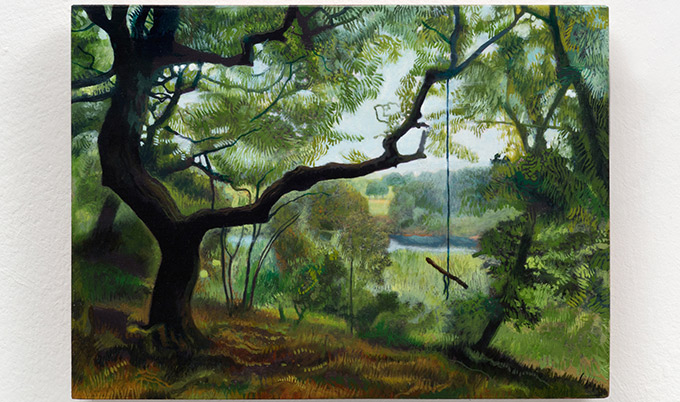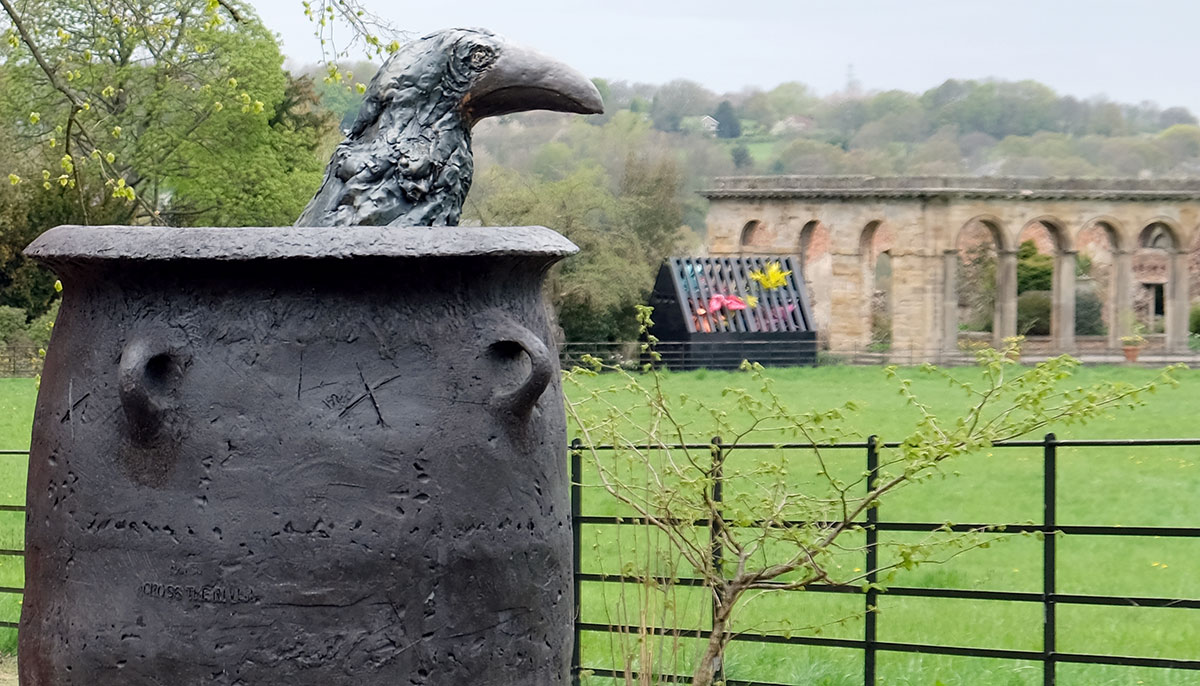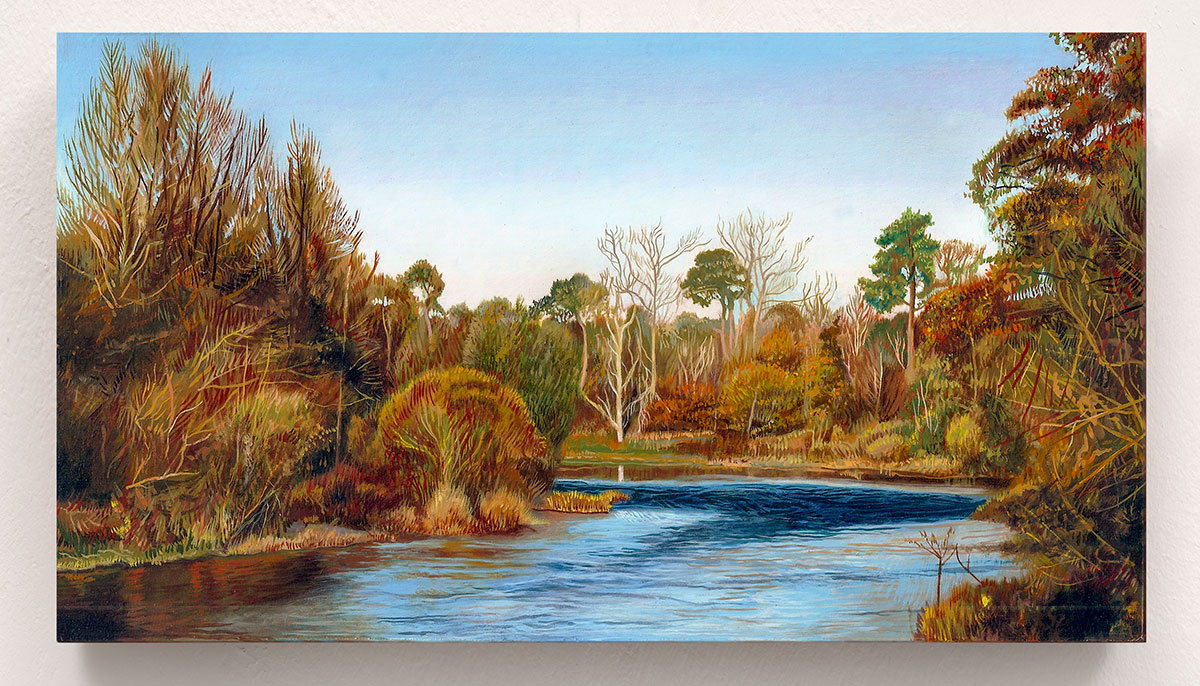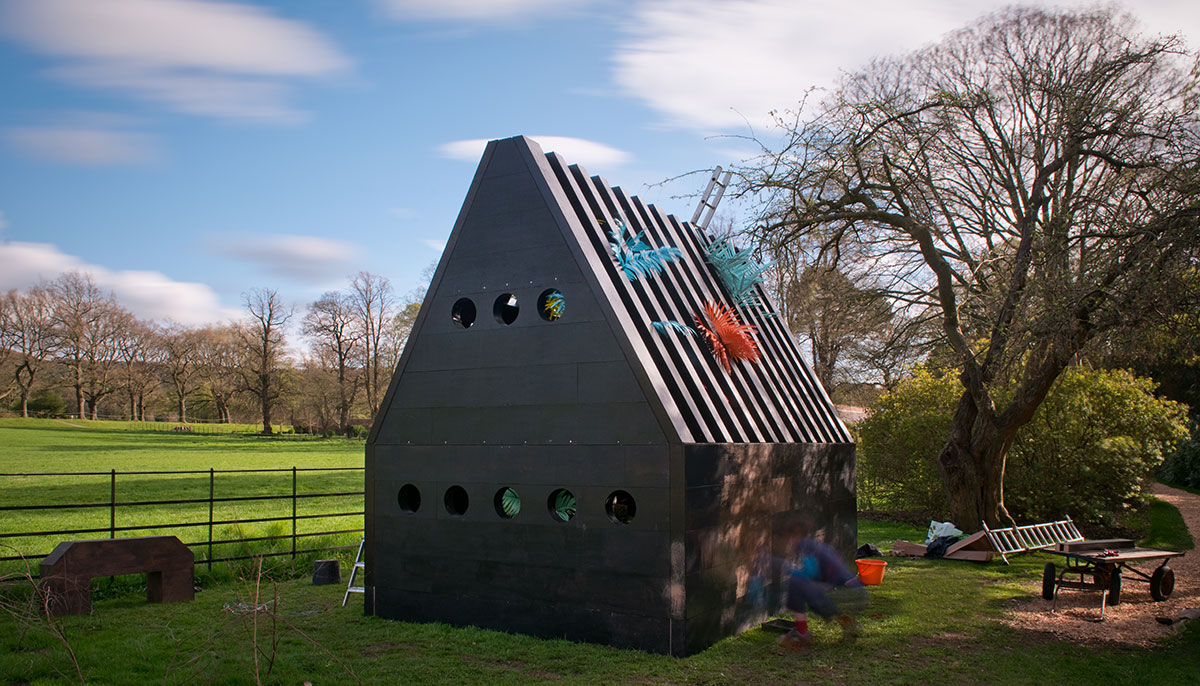Mapping contemp art heritage
Mapping Contemporary Art in the Heritage Experience
Published on: 10 May 2018
Can an urn inspire you to explore the story of Mary Eleanor Bowes? Would paintings spark new interest in Thomas Bewick? How will communities respond to the sound of bells in a disused church?
Created by a group of academics and artists from Newcastle and Leeds Universities, Mapping Contemporary Art in the Heritage Experience will study how visitors to Gibside near Gateshead, Hexham’s Cherryburn and Holy Trinity church in Sunderland react to modern art made for these historic locations.
The aim of Mapping Contemporary Art in the Heritage Experience is to understand what sort of reactions placing contemporary artworks in heritage locations inspires in visitors. The project will chart how people respond emotionally and intellectually, it will also explore whether the art itself is a catalyst for thoughts and questions about the history of each location and its previous occupants.
This Arts and Humanities Research Council (AHRC) funded project is the very first time that academic researchers have joined forces with organisations such the National Trust and English Heritage for a collaborative investigation into how we respond to arts and heritage.

Gibside
Do families enjoying the magnificent grounds and atmospheric buildings of the Bowes-Lyon family seat (ancestors of the Queen Mother) know the remarkable history of Mary Eleanor Bowes?
Born in 1749, Mary Eleanor was said to be the richest heiress during Georgian times after her father George Bowes died and left her his fortune and estate. After an unhappy first marriage the dashing ‘Captain’ Andrew ‘Stoney’ Robinson stepped forward to defend her honour by challenging the Editor of the Morning Post to a duel. However, the Editor was in cahoots with his rival and the pair faked their combat. Pretending to be mortally wounded, ‘Stoney’ asked for Mary Eleanor’s hand in marriage as he lay ‘dying’. She accepted, only for ‘Stoney’ to make a miraculous recovery, after being carried down the aisle on a stretcher.
What followed would be years of physical and mental abuse, before Mary Eleanor secured her divorce, paving the way for the reform of English divorce and custody law. .She died in 1800. During her marriage to ‘Stoney’, he sold off parts of the Gibside estate to pay his debtors, contributing to some of the ruins that can be seen today.
To coincide with the National Trust’s year celebrating Women and Power, contemporary artists Fiona Curran and Andrew Burton are creating brand new artworks for Gibside, inspired by the story of Mary Eleanor Bowes.
In Fiona’s case, it is Mary Eleanor’s passion for botany - she sent the explorer William Paterson to collect rare and beautiful plants from the Cape in Africa – and subsequent contribution to our understanding of plant science, that has inspired her exuberant artwork Your Sweetest Empire is to Please. It takes the form of an architectural folly which is modelled on a Wardian Case - a plant and seed transportation box derived from earlier 18th century experimental transportation boxes. The 4-metre structure will house a series of brightly coloured artificial ‘exotic’ plants. Located beside the ruined Orangery at Gibside, the work will offer a dramatic presence within the landscape that will provoke discussion and enable some of the hidden stories of Gibside to emerge.
Andrew Burton’s work, The Orangery Urns, is inspired by the story of twelve stone urns that once graced the balustrade of the Orangery. He has created a group of ceramic vessels made from red and black clay whose huge size is in keeping with the scale of the surroundings – a rare surviving example of an 18th century landscaped garden, imagined by coal Baron George Bowes and designed by Stephen Switzer one of the very first examples of landscape design and thought to have been an inspiration for ‘Capability’ Brown, who was born in the North East.
The sculptures will be located within and around the Walled Garden as reminders of the way Mary Eleanor loved to walk and enjoy her gardens. Many of the vessels are inscribed with episodes from the scandalous, but harrowing, story of her marriage with the various characters represented as birds. Others carry passages from the wonder-filled journals of William Paterson, written during his journeys in the Cape.
Contemporary Art at Gibside runs from Saturday 12 May to Sunday 30 September.

Cherryburn
Cherryburn is a tiny farmstead, now owned by The National Trust that was once home to Northumberland’s greatest artist, Thomas Bewick - a leading naturalist and much sought-after wood engraver.
In 1797, Bewick cemented his reputation both as a fine observer of life in the landscape and as a supremely gifted artist when the first volume of A History of British Birds was published. Such was its brilliance; British Birds was compared to works of poetry and literature. It also played a recurrent role in Charlotte Brontë's Jane Eyre, while William Wordsworth praised Bewick in the first lines of his poem The Two Thieves: "Oh now that the genius of Bewick were mine, And the skill which he learned on the banks of the Tyne."
Bewick was also a keen walker, so for Mapping Contemporary Art in the Heritage Experience artist Mark Fairnington has followed in Berwick’s footsteps through a largely unchanged landscape and through the eyes of a contemporary artist, painted a series of beautiful miniatures that capture the landscape around Cherryburn. In an act of homage to Bewick, the paintings will be displayed inside the house, inviting visitors to the National Trust property to reflect on the creative process of capturing flora and fauna in such extraordinary detail.
Mark Fairnington’s exhibition Walking Looking and Telling Tales runs from Saturday 2 June through to Sunday 4 November.

Holy Trinity Church
Holy Trinity church cuts a strikingly arcane figure amongst the tower blocks and modern housing estates that have replaced the historic docks of Sunderland. Matt Stokes’ commission, Gogmagog: The Voices of the Bells, is a sound installation sited in the nave of the church that reinterprets a peal rung on its bells in 1898.
Whilst the bells are currently silenced due to the condition of the bell tower, a new version of the peal has been given life by local composers, musicians and singers, drawing lyrics from the story of the church’s historical social roles, paralleled by the thoughts of the community who now inhabit Old Sunderland.
The construction of Holy Trinity Church in 1719 marked the forging of Sunderland as a city, playing an important role in the lives of local people. Over time its place changed as the centre of the city shifted to the west. With this and the decline of industry and trade, the community surrounding the church also changed. Gogmagog allows these voices to be heard, alongside celebrating the history and resilience of the area through the eyes of Holy Trinity and its continuing legacy.
Visitors to Holy Trinity can experience Stokes’ Gogmagog – The Voices of the Bells from Saturday 7 July until Sunday 23 September.

A rich resource
Once all the artworks are in situ, the research aspect of Mapping Contemporary Art in Heritage will begin in earnest.
“The aim of the research is to test how contemporary art sited in heritage properties can change the experience of visitors, how it impacts on heritage organisations, including their staff and volunteers, and how it can change the working practices and professional lives of artists” says Andrew Burton, who is also a Professor of Fine Art and Newcastle University.
He adds: “Bold claims are often made by funding agencies and heritage organisations for the value of commissioning contemporary art – but they have never been rigorously tested. The research will be important in guiding future investment in the arts.”
The research will also map the current ‘landscape’ of contemporary art in heritage sites across England and Wales, including the artists, curators, sites and organisations involved.
The project will be documented through a website which will build into a rich resource for curators, the public, artists, students and researchers who want to find out more about the production and consumption of contemporary artworks commissioned for historic locations.
An exhibition at Newcastle University's Hatton Gallery and a major conference is planned for 2019 – both will include work and presentations from all the commissioned artists.
For more information about Mapping Contemporary Art in the Heritage Experience please visit the project website .






